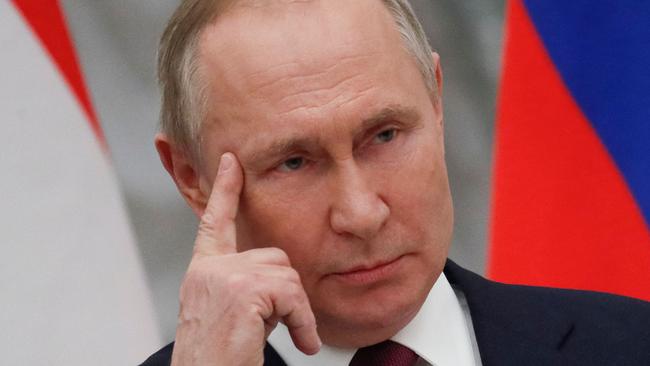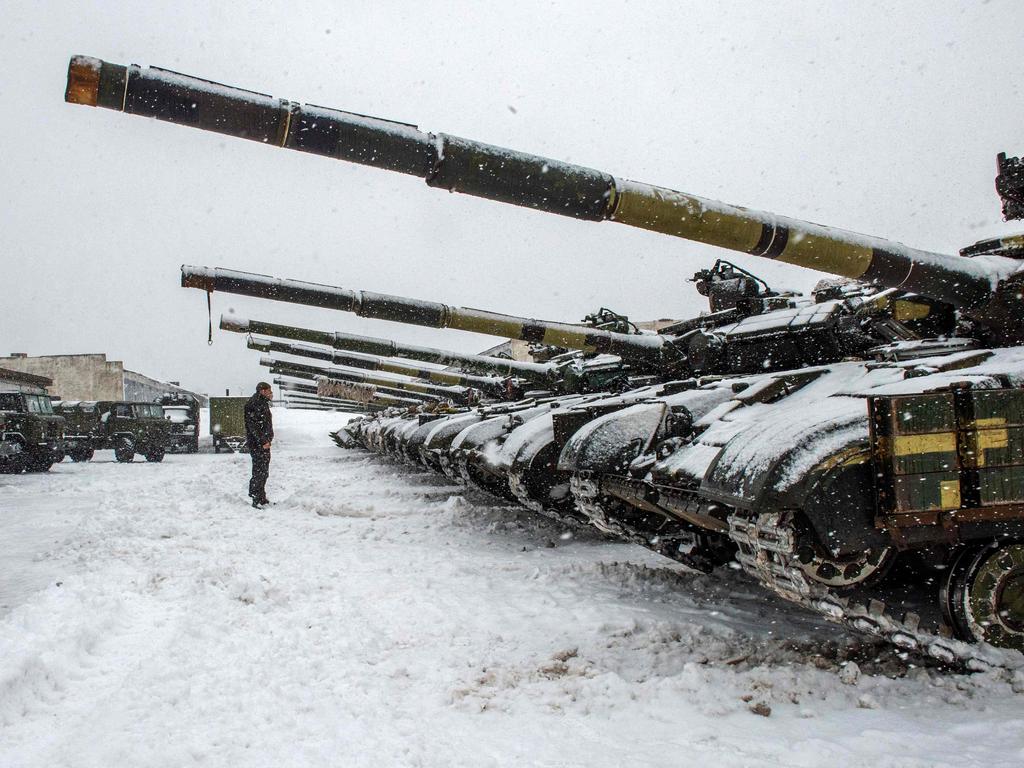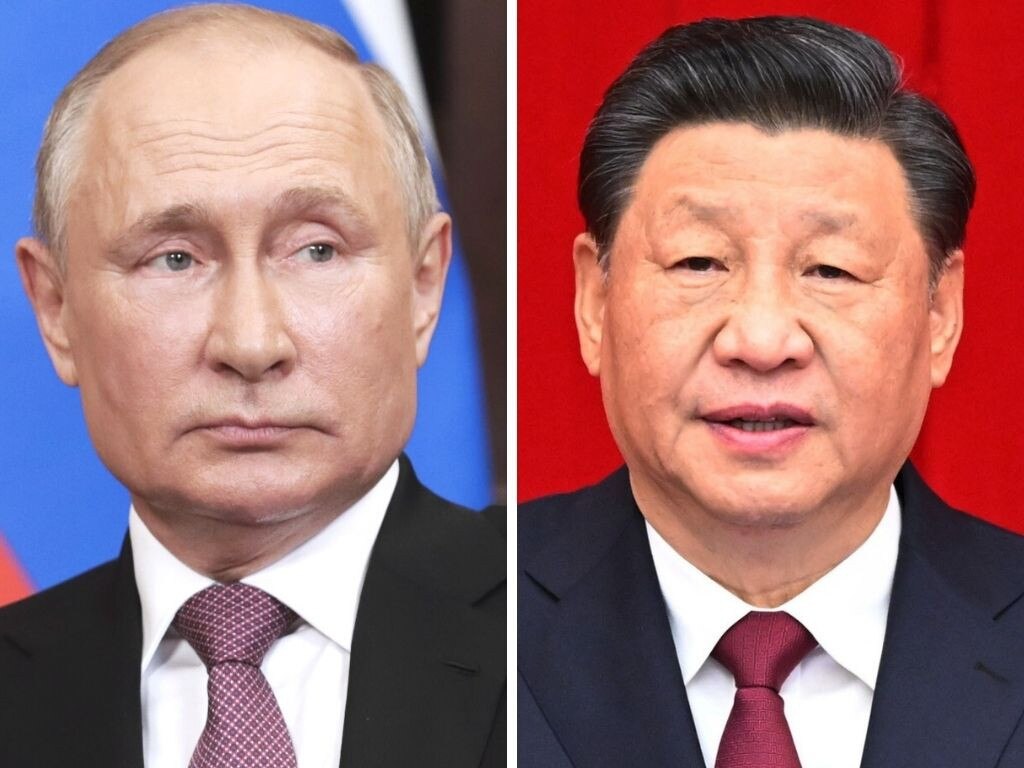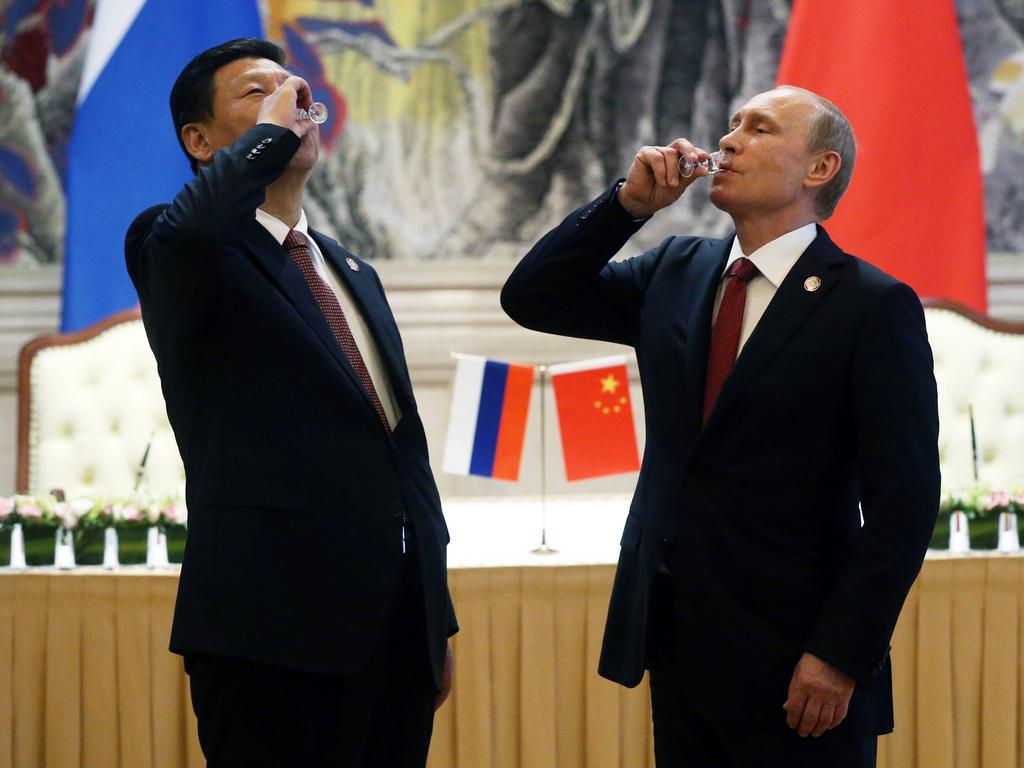
Indeed, that may be his immediate aim, confirming in the eyes of the world that the West lacks the resolve needed to protect what little remains of the rules-based international order.
No doubt, merely showing up the West doesn’t eliminate the risks involved in actually invading Ukraine, but each additional sign of Western hesitation facilitates Russia’s attempts to suborn its smaller neighbours.
And with Russia’s continuous land border, the world’s longest, separating it from 12 other countries and traversing 20,000km, Putin has plenty of room in which to throw his weight around.
That hardly means Putin could fully reverse what he has frequently referred to as the tragedy of the Soviet Union’s collapse; but it may well be that he envisages his legacy as being the restoration – in fact if not in law – of Russia’s Eurasian hegemony. There is, in that aspiration, an obvious echo of Russia’s history, in which each significant retreat in the country’s reach has been followed by the clawing back of lost ground.
Thus, Napoleon’s dismemberment of the Russian Empire proved short-lived, as did the far-reaching territorial losses inflicted by the Crimean War; and even the disastrous concessions the Bolsheviks were forced to make in the 1918 treaty of Brest-Litovsk were more than undone by Lenin and Stalin, with the territory they regained then being extended through the immense sacrifices of the Great Patriotic War.
It is that cycle of defeat and redemption, in which rulers claim historic greatness not through the calibre of their rule but by reconquering, whenever it is lost, Russia’s “dark mother earth”, that pervades the country’s collective consciousness and its telluric conception of nationhood.
And it is by appealing to the Russians’ perceptions of themselves as ever the victims, never the vanquished, that Putin believes he can galvanise the support he needs to entrench his power and realise his goals.
However, seen in history’s broad sweep, Russia’s persistent attempts to dominate its near surrounds have proven to be a source of weakness rather than of strength. No one understood that better than Lenin, who believed that for so long as Russia remained a “prison-house of nations” it would inevitably provoke the ethnic separatism that could tear it apart.
With nationalism becoming ever stronger over the course of the 19th century in Ukraine, Georgia and the Baltic States, any attempt to simply perpetuate the empire was, he argued, doomed to fail.
As a result, from 1903 on, the Russian Workers’ Social-Democratic Party, which eventually became the Communist Party of the Soviet Union, included in article nine of its platform the right to national self-determination (a term whose modern sense Lenin coined); and the party’s 1917 Declaration of the Rights of the Peoples of Russia insisted that the right to self-determination extended “even to the point of separation and the formation of an independent state” – a formulation adopted in every subsequent Soviet constitution.
Moreover, Lenin declared, any “unification of a small and weak people with a large and strong state, without the exact, clear and voluntarily expressed consent of this people” was presumptively illegal.
The Soviet Union was therefore officially formed as a “confederal union of a new type”, rather than as a “federal state”, through a treaty signed by the four founding republics, in which its constituent parts each retained undiminished sovereignty.
It was that attribute of formally continuous statehood that provided the legal basis for the admission in 1945 of Ukraine and Belarus as members of the UN in their own right and for their separate ascension during the Soviet era to multilateral treaties, such as the conventions on the law of war, that bind them to the present day.
In practice, formal statehood in no way allowed the 15 Soviet republics to deviate from communist rule, nor did it prevent the Soviet Union from entirely ignoring the right to self-determination in its annexation of the Baltic States.
It was, however, the enduring paradox of the Soviet Union that de facto centralisation coexisted with a fractal structure in which each republic replicated the union’s economic and political institutions, including by having its own Communist Party.
Lenin was convinced that whatever centrifugal tensions that might create would vanish as the common goal of building socialism erased “petit-bourgeois national differences”; instead, with socialism’s star waning, the differences became increasingly pronounced.
To make matters worse, particularly in the southern and far eastern republics, the economic and political stagnation of the Brezhnev era – in which local party bosses typically remained in office for 15 to 20 years – encouraged the growth of regional “mafias”, cementing local networks of corruption and influence that were deeply intertwined with each region’s social, cultural and religious elites, and whose interests and ambitions diverged ever more sharply from those of the centre, which was itself in decline.
In that way, the Soviet Union, just like the tsarist empire before it, had laid the bases for its own disintegration.
Far from being the result of Western scheming, that collapse reflected structural forces that have operated virtually continuously in Eurasia for the past two centuries, including the hardening, during the decades of Soviet rule, of conflicting national elites, ambitions and aspirations. Equally, if Russia’s influence over its hinterland faded, it was because its economic, social and political model was, and remains, so deeply flawed.
For all the attractions of, and rhetoric about, restoring former glory, Putin must realise that. He clearly recognises that the kleptocracies that emerged from the disintegration of the Soviet Union – and that now stretch from the EU’s borders to the Mongolian steppes – pose no threat to his own kleptocratic regime. They are, for sure, reluctant to share their loot with the Putin clan and distrust its long-term goals, but they have a common interest in survival and no interest in undermining each other’s grip on power.
Yet matters are entirely different with respect to the handful of democracies that emerged from the Soviet wreckage, and particularly with Russia’s historical cousins in Ukraine, Georgia, Moldova and Armenia.
With their governance marred by endemic corruption and ethnic tensions, these are already extremely fragile states; Putin is determined to ensure their experiment in democracy ends in chaos, preventing them from acting as a role model for young Russians. And there is no easier way to destabilise them than to fan separatist tensions and permanently threaten their existence – as Russia is now doing in Ukraine.
Ukraine is, however, a country whose longstanding legal status as a sovereign nation is beyond doubt. It is also beyond doubt that the US has repeatedly given assurances about its territorial integrity, not least in the 1994 Budapest Memorandum on Security Assurances. If Russia is allowed to act in ways that plainly amount to the crime of aggression, what value can possibly be placed on the myriad guarantees offered to Taiwan, which does not even possess formal sovereignty?
The answer, simply put, is none. Putin knows that, as does Xi Jinping. Little wonder that as the West dithers, they smile.







It is one of the many ironies of Vladimir Putin’s brinkmanship in Ukraine that while he demonises the West as the greatest threat Russia faces, his actions have served only to highlight the divisions within the Western alliance.